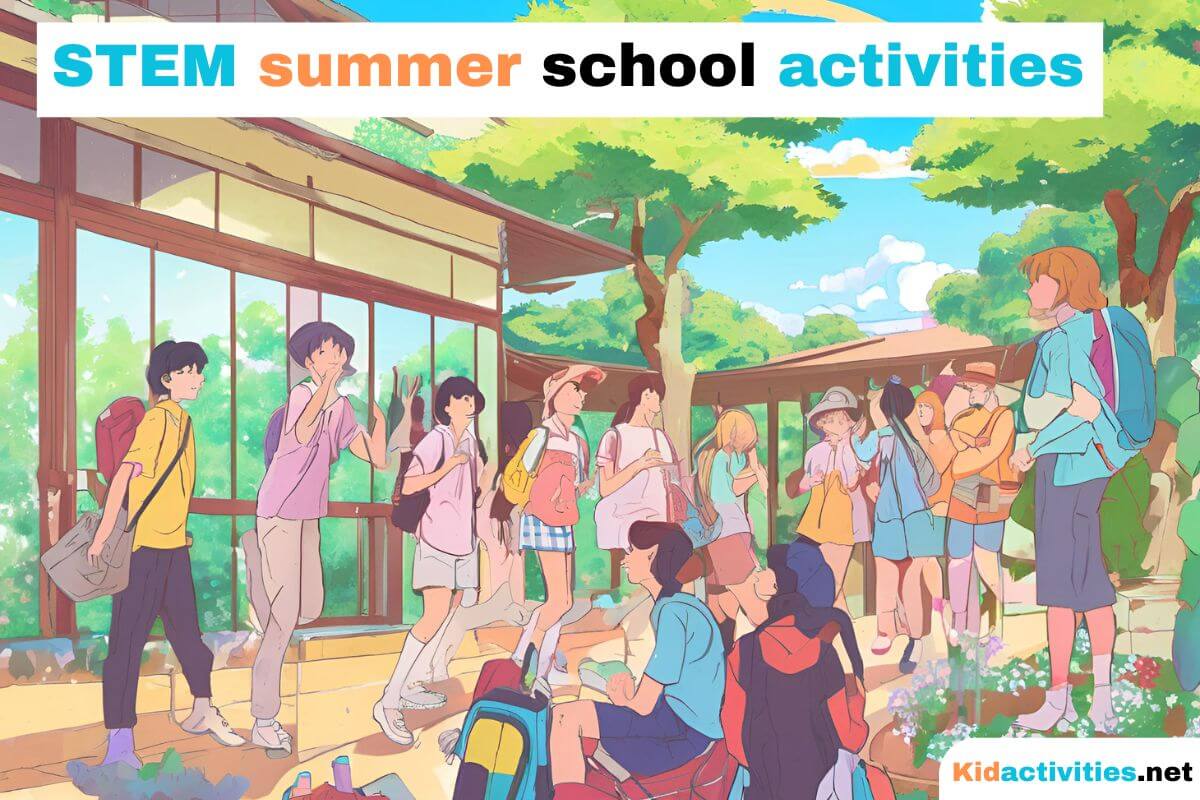School is out for the summer! However, your young scholar can keep learning. Kids have naturally curious minds and love to explore their interests. Keep their minds stimulated with fun STEM activities that do not feel like traditional school-style learning.
STEM stands for Science, Technology, Engineering, and Mathematics. Many schools have adopted the initiative to incorporate STEM activities into their curriculum to cultivate investigation, problem-solving, and collaborative skills among their students. STEM projects are hands-on and can be approached in many innovative ways. Below are five fun summer STEM activities your young scholar can do at home with common household items.
Paper Roller Coaster
Materials Needed:
- A piece of cardboard (square or rectangle shape is fine, with at least two square feet available)
- Cardstock (three to eight pieces depending on the size of the roller coaster)
- Scissors
- Scotch tape
- Marble
Challenge:
Your young scholar’s mission is to build a paper roller coaster! They can use the scissors to cut the cardstock in a way that allows them to manipulate the shape and tape cardstock into pillars, hills, curves, and loops. Your child can tape their roller coaster design onto the cardboard for a sturdy foundation and create the coaster of their dreams! As a bonus challenge, encourage your child to include at least two hills, one loop, and three curves. Finally, put the coaster to the test by placing a marble at the top of the first hill and watch it coast!
Invisible Art
Materials Needed:
- Bowl
- Lemon
- Water
- Spoon
- Q-tips
- Paper
- Lamp or microwave
Challenge:
Create invisible art with invisible ink! Make the invisible ink by squeezing the juice of a lemon into a bowl. (An adult should help slice the lemon). Next, add a few droplets of water to the lemon juice. Stir the lemon juice and water together with a spoon. Dip one end of a Q-tip into the mixture and create a drawing on the paper with the Q-tip. Re-dip every time the Q-tip dries, switching ends and using new Q-tips until your drawing is complete. Finally, deliver the art to its recipient. They can hold the paper under a lamp for a few minutes or microwave it for a few seconds (an adult must help use the microwave). Watch the look of surprise on their face as the heat causes the invisible ink to appear on the paper!
Erupting Volcano
Materials Needed:
- open box
- empty plastic bottle
- strips of newspaper
- tape
- glue
- water
- paint
- paintbrush
- one tablespoon of baking soda
- one tablespoon of dish soap
- two tablespoons of water
- half a cup of vinegar
- food coloring
Challenge:
Make an erupting volcano in your own home! First, build a volcano. Begin by taping an open and empty plastic bottle to the center of an open box. Next, crumple some newspaper strips around the bottle and loosely tape them to the bottle. Mix glue and water in a bowl. Dip more newspaper strips into the mixture and assemble them around the bottle and newspaper strips, shaping the material into a volcano. Make sure to leave the open mouth of the bottle free from newspaper strips. Allow your volcano to try. When it is dry, paint the volcano any color you wish and allow the paint to dry.
Mix the baking soda, dish soap, and water in a bowl. Pour the mixture into the open mouth of your volcano. Mix the food coloring with the half cup of vinegar in a separate cup. When ready, pour the vinegar and food coloring mixture into the mouth of the volcano. Watch your “lava” explode out of the volcano!
Homemade Ice Cream
Materials Needed:
- 2-gallon resealable bags
- 2 cups of heavy cream
- 1/4 cup of sugar
- 1 teaspoon of vanilla extract
- 6 cups of ice
- 1/3 cup rock salt
- ice cream toppings of your choice
Challenge:
Make a delicious summer treat through this fun science experiment! First, combine the heavy cream, sugar, and vanilla extract in one bag and seal. Next, add the ice and rock salt to the other bag. Place the sealed bag with the ice cream ingredients into the second bag. Shake the bag, dance around with it, toss it from person to person, and mix and mash the ingredients for about fifteen minutes until the inner bag churns into an ice cream texture. Carefully take out the inner bag of ice cream and rinse off the rock salt from the outside of the bag. Open the bag and pour your ice cream into a bowl to enjoy! Top with any sprinkles or syrup you would like.
Egg Drop Challenge
Materials Needed:
- Raw egg
- Cardboard toilet paper tube
- Paper
- Tape
- Scissors
- Pipe cleaners
- Balloons
- Rubber bands
Challenge:
Challenge your child to create a device that allows a raw egg to land safely without breaking when dropped from a pre-designated height of your choice. Please provide your child with the materials listed and watch them design and test their contraption. Put their invention to the test by placing the egg inside the cardboard tube and dropping it from a height of your specification. If the egg breaks, encourage your child to try again! If the egg lands safely, celebrate!
Watch in amazement as you see your young scholar explore, re-think decisions, and solve a problem with both creativity and logic! Their willingness to take on new challenges will grow as they complete these STEM activities. Don’t be surprised if they ask for more challenges!
F.A.Q.s
Q: The marble for my child’s paper roller coaster does not have enough momentum to ascend the loop. How can we fix this problem?
A: Use height to your advantage. Increase the height of the first hill to allow the marble to gain enough speed and momentum to make it around the loop!
Q: My child does not consume dairy products. Do you have a recommendation for a substitute for the Homemade Ice Cream?
A: Yes! Soymilk, almond milk, coconut milk, or cashew milk will work just as well as dairy projects for the Homemade Ice Cream Challenge.
Q: How many eggs should I dedicate to the Egg Drop Challenge? I don’t want to lose the dozen!
A: I recommend dedicating three eggs to this challenge. The idea is for your child to intentionally improve their design if it does not work the first (or second) time. Allowing unlimited eggs may negatively impact their willingness to craft a successful contraption.




